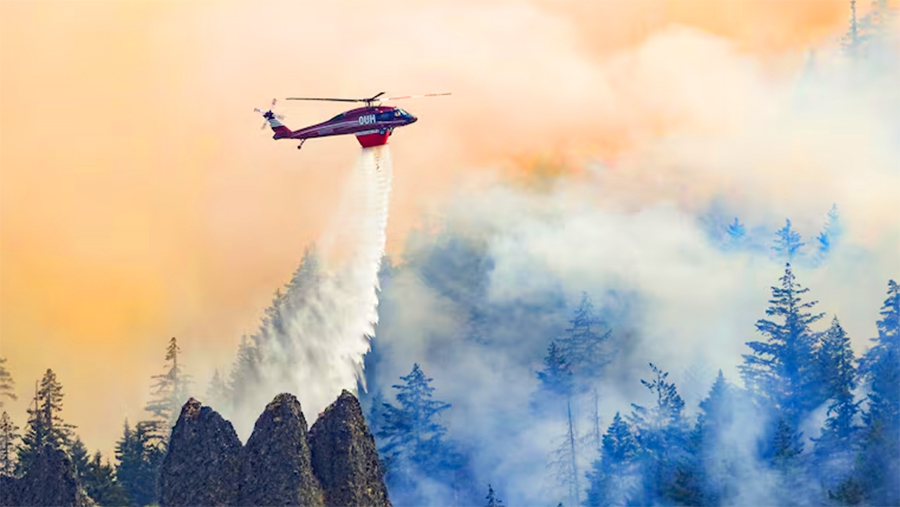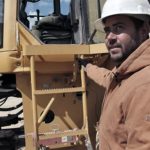The first wildfire started on May 10 near the remote town of Fort Nelson in British Columbia. With dry and windy conditions, the fire quickly spread to consume over 13,050 acres in three days. By July 22, a fire started near Jasper National Park, which prompted park evacuations as well as in the town of Jasper.
The U.S. Forest Service (USFS) has reported that hundreds of thousands of forested acres across the Pacific Northwest are burning under record-breaking dry conditions with no relief. A heat wave, a series of lightning storms, and human activity have combined to start over 60 significant fires in Oregon and Washington.
With over a hundred wildfires burning across Oregon alone and several air quality advisories issued, officials have closed almost 50 of the state’s most popular hiking and camping sites.
The Dyrt, the app for camping availability, photos, and reviews, found that 18 percent of campers reported that wildfires or natural disasters disrupted their camping plans in 2023—three times more than the 6 percent who said their plans were disrupted in 2019. This indicates a steady rise over the past five years.
The percentage of campers who reported wildfire or disaster-related disruptions in 2020 and again in 2021 was 11 percent. That has now increased to 18 percent in 2022 and 2023. As part of The Dyrt’s 2024 Camping Report, West Coast states (California, Oregon and Washington) were most affected by fires and natural disasters.
“The Dyrt has been headquartered here in Oregon since the very beginning, so we’ve seen firsthand the toll wildfires have taken on the Pacific Northwest,” said The Dyrt’s CEO, Kevin Long. “It’s scary and tragic for so many reasons. These unpredictable occurrences also make it extremely challenging to plan ahead for camping. And because it can be so difficult to get a reservation at popular campsites, making a last-minute change of plans is exceedingly difficult.”
According to The Dyrt, one-third of West Coast campers (33.1 percent) had plans interrupted by wildfires and natural disasters in 2023. That’s two-and-a-half times more than the average camper nationwide, which is 13.1 percent when excluding the West Coast. Zooming in specifically on the PNW, 42 percent of campers in Oregon and Washington reported disruptions in their camping plans.
“Thirty miles and millions of acres of burnt trees” is how The Dyrt camper Robert D. of Oregon described a road trip with his wife from Yamhill to Redmond in 2023. “At mile marker #23 the devastation started. Because of the amount of trucks and equipment working to remove all the burnt trees, the speed limit was reduced to 40 mph. “I looked up both sides of the canyon wall some thousand feet above me. All I could see was burnt trees clear to the top on each side. Hundreds of thousands of trees burnt just enough to blacken the trunk at the bottom but not enough to get to the branches up high. Our favorite camping spot, Blue Pool Campground, was closed for over a year’s time.”
In a press release from the U.S. Forest Service, Pacific Northwest Assistant Fire Director for Operations Ed Hiatt said, “This is shaping up to be another monster fire year in the Pacific Northwest, and it’s just mid-July. We’re at Preparedness Level 5, the highest level of wildfire response possible in the region and nation.” Currently, the largest active blaze in the U.S. is in eastern Oregon and Idaho.
The Deschutes National Forest has had 75 days without rain, and fire season runs for another three months. According to the USFS, all 17 national forests in Oregon and Washington are under campfire restrictions, as human-caused ignitions account for 75 percent of wildfires in the Pacific Northwest.
As reported by OPB, on Monday, July 29, the Redmond Air Tanker Base used one million gallons of wildfire retardant as they flew over hotspots. “That is the earliest that they have hit that one million gallon milestone in anyone’s recent memory,” said U.S. Forest Service spokesperson Holly Krake. While temperatures are expected to cool by the end of the week, the lack of moisture means the PNW will have to stay under the nation’s highest level of preparedness for a while.
“It doesn’t get any higher than this,” Krake continued. So we are using every crew member, engine, dozer, aircraft, and resource available as much as we can.”
The U.S. Forest Service noted to the OPB that it is mobilizing resources nationwide to fight the fires, including those from Michigan, Wisconsin, Florida, and North Carolina.
Image courtesy U.S. Forest Service














